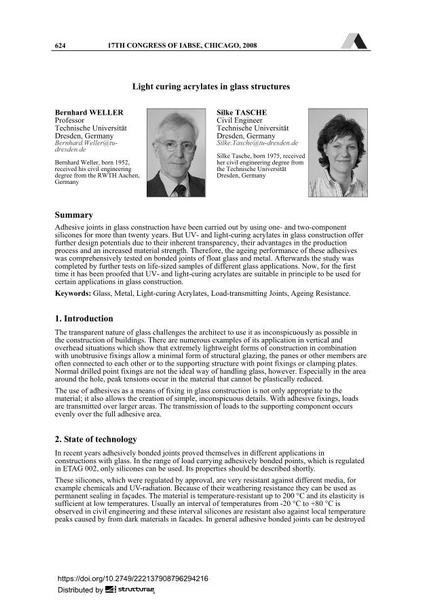Light curing acrylates in glass structures

|
|
|||||||||||
Bibliographic Details
| Author(s): |
Bernhard Weller
Silke Tasche |
||||
|---|---|---|---|---|---|
| Medium: | conference paper | ||||
| Language(s): | English | ||||
| Conference: | 17th IABSE Congress: Creating and Renewing Urban Structures – Tall Buildings, Bridges and Infrastructure, Chicago, USA, 17-19 September 2008 | ||||
| Published in: | IABSE Congress Chicago 2008 | ||||
|
|||||
| Page(s): | 624-625 | ||||
| Total no. of pages: | 9 | ||||
| Year: | 2008 | ||||
| DOI: | 10.2749/222137908796294216 | ||||
| Abstract: |
Adhesive joints in glass construction have been carried out by using single - and double-component silicones for more than twenty years. The use of UV- and light-curing acrylates in glass constructions, however, offer further design potential due to their inherent transparency, advantages in the production process and increased material strength. Aging performance of these adhesives was, therefore, comprehensively tested on bonded joints of float glass and metal. Additional tests were conducted on full-scale samples for various glass applications. Now, for the first time it has been proofed that UV- and light-curing acrylates are suitable in principle to be used for certain applications in glass construction. |
||||
| Keywords: |
glass Light-curing Acrylates Load-transmitting Joints Aging Resistance
|
||||
